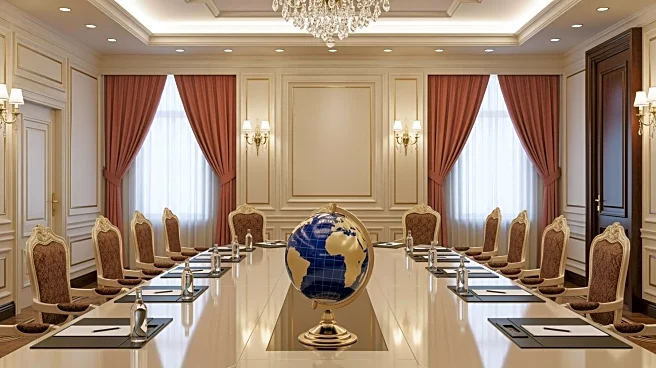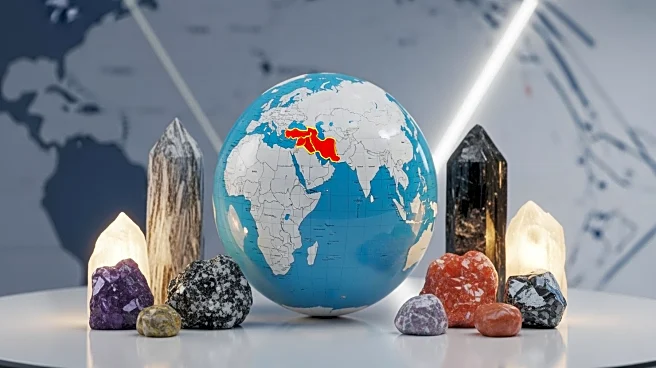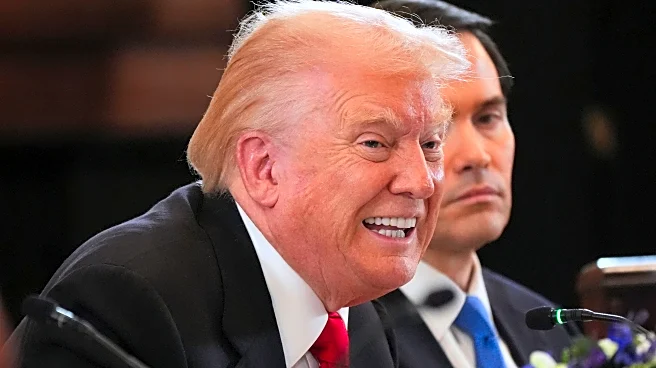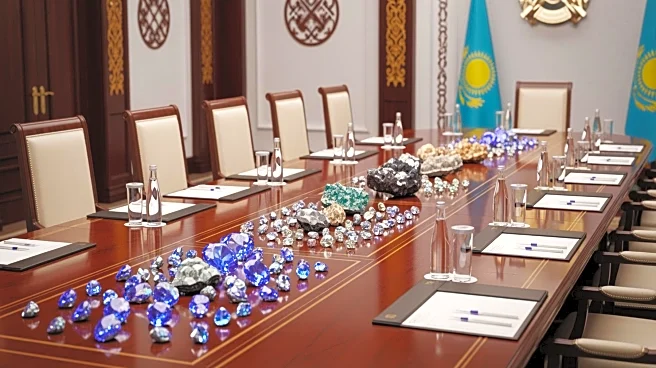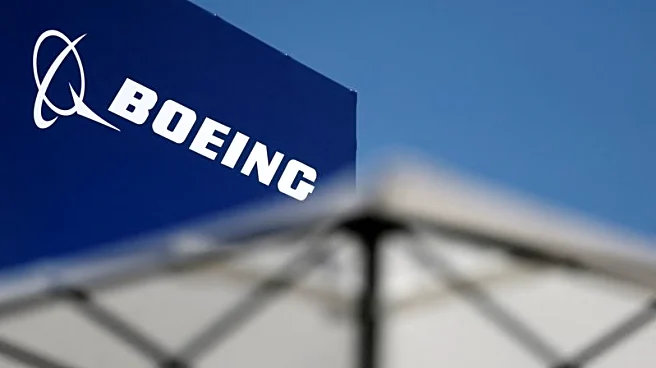What's Happening?
President Donald Trump is set to host leaders from five Central Asian nations at the White House. This meeting is part of the U.S. strategy to increase its influence in a region traditionally dominated
by Russia and increasingly influenced by China. The discussions will focus on securing critical minerals and energy supplies, as well as establishing overland trade routes that bypass geopolitical rivals. The C5+1 platform, initiated in 2015, includes the United States and the Central Asian states of Kazakhstan, Kyrgyzstan, Tajikistan, Turkmenistan, and Uzbekistan. A memorandum of cooperation on critical minerals was signed between the U.S. and Kazakhstan, highlighting the strategic importance of these resources.
Why It's Important?
The meeting underscores the U.S. effort to diversify its supply chains away from Russia and China, particularly in securing critical minerals essential for energy transition. Central Asia's vast deposits of uranium, copper, gold, and rare earths are crucial for global energy needs. Kazakhstan and Uzbekistan are significant uranium suppliers, vital for U.S. nuclear power. The U.S. aims to reduce reliance on China, which dominates global supply chains for strategic metals. This geopolitical maneuvering could reshape alliances and economic dependencies in the region, impacting global energy markets and supply chains.
What's Next?
The U.S. is likely to pursue further government-to-government engagements and commercial deals to secure access to vital minerals. As China and Russia continue to strengthen their control over the region's resources, the U.S. will aim to establish a foothold through strategic projects. The outcomes of these meetings could influence future U.S. foreign policy and economic strategies in Central Asia, potentially leading to new partnerships and investments.




